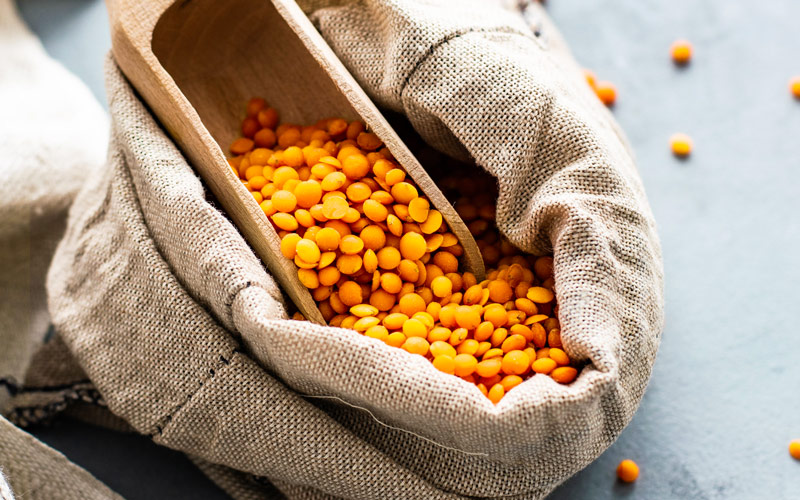How may Covid condition the UK food system in 2021?

A year ago we were being introduced to an invisible entity that supposedly emerged from a Wuhan market that has totally transformed the lives of the British, including over one hundred thousand fatalities. To have predicted the events of the past year in early March 2020 would have been the stuff of modern day fantasy.
How many times did we see the word ‘unprecedented’
However, but three weeks on from the beginning of March last year the UK would be in a national lockdown whilst in-between the supermarket shelves would be cleared out by panic buyers; rationing had to be introduced. The industry’s employees would gain key worker status, many supermarket check-out staff putting their lives on the line from a sense of duty – teaching unions may like to take note – whilst unprecedented demands would be placed upon the supply chain, not seen for the vast majority in their life times.
One year on and the UK remains in lockdown, with a road map suggesting that the key will come out and fully open the doors for people on midsummers’ day. Those keys, however, will only come off the rail if mutant variants remain suppressed and hospitalisation and fatality rates continue their current downward trend. There will no doubt be further twists and turns to this most remarkable story.
Comparatives are likely to distort 2021
And for the food system, the industry at the heart of the pandemic, what of 2021? Well, notable adjustments are likely to be evident whilst some of the developments witnessed in 2020 will be with us for good. Most evidently, from mid-March the British supermarkets face into material sales headwinds, given the spike in demand encountered last year. Thereafter, sales momentum is likely to ebb and flow to last year’s tune, with comparatives easing through the summer months and ‘eat out to help out’, before rebuilding through the autumn and winter.
In early 2020, Shore Capital Markets was forecasting that the value of the British grocery industry would grow by c2.0% in the year ahead, c1.5-2.0% in 2021. As it turns out, the UK Grocery market grew at c7.5% in 2020, about 6.5% of which was volume, nearly four times Shore’s expectations. Accordingly, for 2021 it is reasonable to anticipate a decline in value, c2.0%, with volumes weaker still, maybe 3.0-4.0% after taking into account inflation and mix; in 2022 value growth should again be positive, maybe c2.0% again.
All in all for grocery, Covid has brought elevated sales but also costs too, c£850m in the case of Tesco UK in its FY2021. So, whilst the supermarkets face into weaker sales momentum in 2021, its mix, costs and cash flow comparatives should remain very positive as the economy unlocks and people move. From a mix perspective, it is also reasonable to anticipate that the demand for staples may ease back as more Food-to-Go is consumed with students and workers once again on the move.
“In early 2020, Shore Capital Markets was forecasting that the value of the British grocery industry would grow by c2.0% in the year ahead, c1.5-2.0% in 2021. As it turns out, the UK Grocery market grew at c7.5% in 2020, about 6.5% of which was volume, nearly four times Shore’s expectations.”
The return of a smaller F&B channel?
On top of the comparatives, if the British unlocking programme comes through as planned, then demand for the beleaguered Food & Beverage (F&B) channel should correspondingly rebuild. Whilst so, that channel is expected to be 20-30% smaller than the pre-pandemic days, capacity that is likely to benefit supermarkets, whilst supporting pricing and so gross margins in the out of home market.
Quite how the F&B channel evolves remains to be seen. Quick Service Restaurant (QSR) players like McDonalds have transformed their digital capabilities through the pandemic, now emerging as a much more able click and collect operator. Many restaurants have also become takeaways in effect and it will be interesting to see how many return to their sit down roots. Sadly, the pandemic will probably account for many independent cafes, public bars and restaurants, with the Casual Dining segment a particular victim, albeit this was a segment with too much capacity and pre-existing vulnerabilities.
The importance of working from home
The new dimension to the British labour process and so its food system will be working from home. It feels like home working is here to stay, which should boost supermarkets and the online channel in particular, noting that most web based grocery shopping is store picked. Whilst the comparatives for online shopping are particularly challenging, c100% for some, an expanded market with many households still concerned about bio-security is likely to mean no going back to c7% pre-pandemic participation. A key question for the sector is will the move into online grocery profitability be competed away or are the structural gains here to stay?
What we see in the last year is evident elsewhere in British consumer markets, many years of organic change experiencing a concertina process into just one. The legacy of Covid-19 though can be expected to persist well into future years through its reshaping of lifestyles and behaviours.
What of biosecurity, sustainability and well-being?
More enduring questions, therefore, revolve around the future shape and mix of the British food system, its channels and segments, plus whether or not biosecurity, sustainability and well-being have also gone through a metamorphosis as a result of the last year.
The shadows of Covid can be expected to be long, all of which makes the sunshine of St David’s Day and the crocuses and snow drops of 2021 all the more special.
Dr Clive Black
Senior Advisor
Coriolis Consulting
March 2021.








